Over the past several months, we've spoken with dozens of teams and started uncovering common patterns to plan and arrange work within their workspaces. In Vistaly, we decided to capture these patterns using a combination of Validation Statuses, Validation Messages, and labels (a flexible tagging system).
Validation Statuses – Determining which opportunities are worth it
One of the first patterns we picked up on was the need to distinguish between valuable opportunities and others that are less so (or even those that are proven invalid).
By making this distinction, a team can focus on where it matters and communicate their learning and decisions.
When we were conducting research before building validation statuses, a few users shared a helpful post from the Product Talk team: Engaging Stakeholders with Opportunity Solution Trees: 3 Tactics to Try.
One mistake we made was rolling validation statuses out to all card types (not just opportunities). The original thinking was that it would apply to other card types like solutions or experiments. While that was true, many users desired more explicit statuses to communicate the state of those cards, and others found it confusing. So, for example, an experiment is not VALIDATED or INVALIDATED, but it could be PASSED or FAILED (as well as several other states).
Deploying validation statuses in a broad context also led to more support questions than I'd care to admit, so we returned to the drawing board.
Card specific statuses
We started by analyzing the usage of validation statuses on opportunities cards vs. all other card types. We found that most users were leveraging the feature as initially intended (applying decision logic to opportunities), which gave us confidence that we were on the right track. Most of the questions we recieved in support tickets revolved around understanding the difference between marking an opportunity as worth exploring further or not, compared to other supported states like ADDRESSED or the idea of "an opportunity actively being solved".
We ran a few quick UX experiments on a status redesign, which brings us to the next version of statuses in Vistaly.
Opportunity statuses
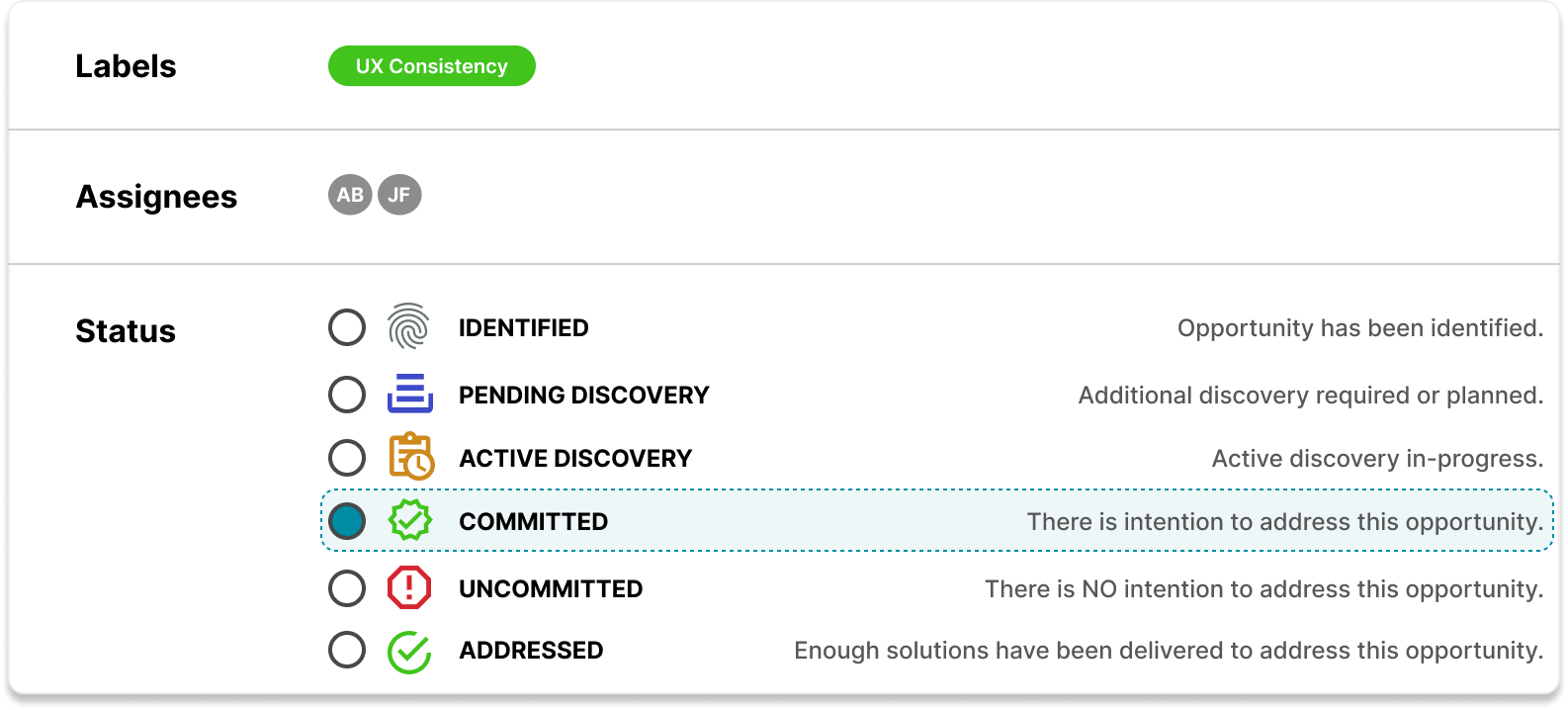
One status that came up several times in discovery but has purposely been excluded from this list is the idea of IN PROGRESS opportunities (one or more solutions or experiments actively being worked on to address the opportunity). It has been excluded because it can be derived from other data, meaning that, depending on the state of its child cards (ex: solutions set to NOW), opportunities that are IN PROGRESS can be determined automatically.
This screenshot demonstrates what this could look like, but it is outside the current publicly available version of Vistaly.
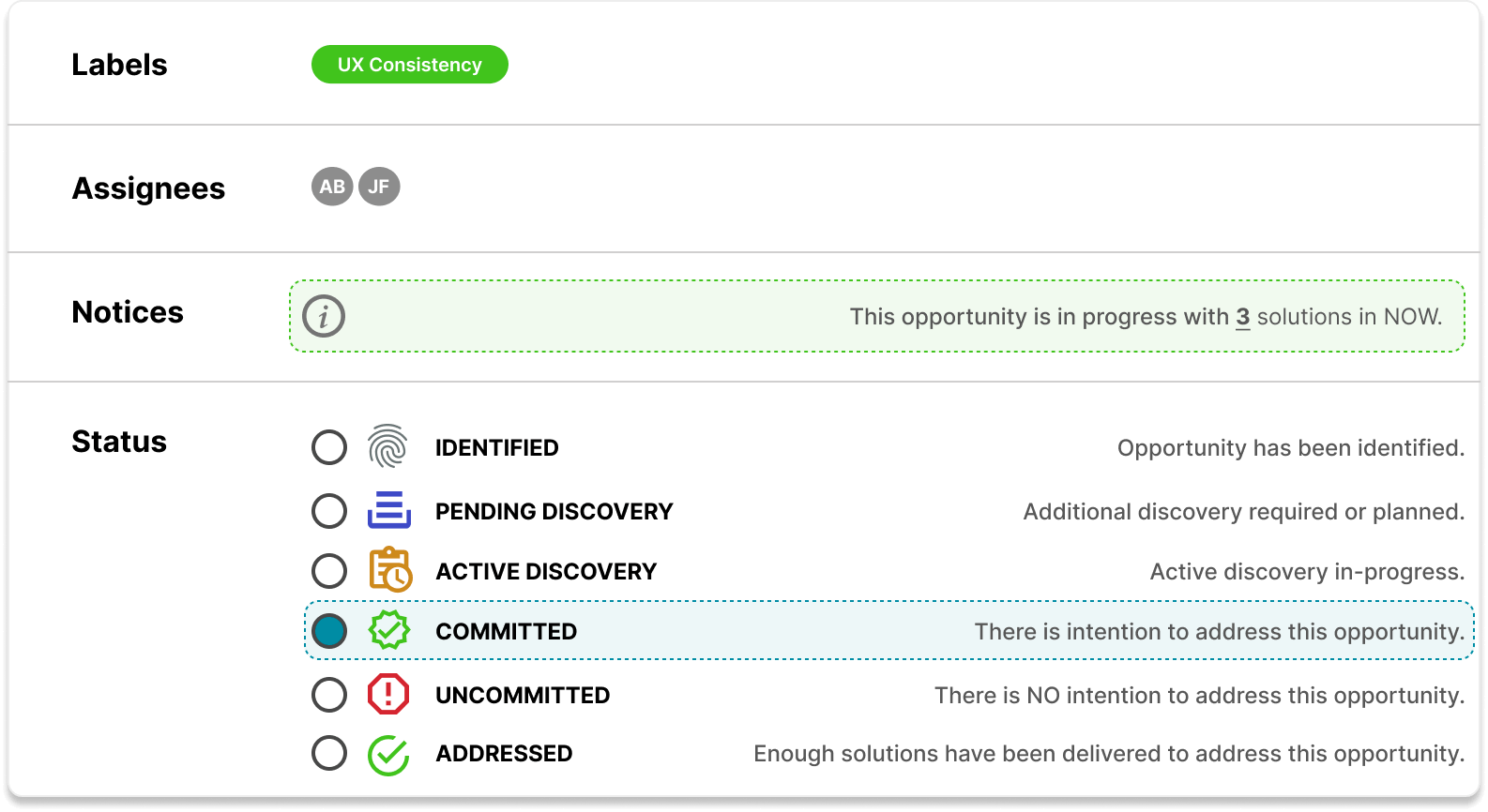
Mapping old statuses to their new statuses
With the consolidation of validation status and opportunity status, we were required to map the historical fields to their updated corresponding statuses. Here are how the fields are now mapped.
- Validation Status REQUESTED –> New Status PENDING DISCOVERY (Only if the old Opportunity Status was not ADDRESSED or IN PROGRESS)
- Validation Status PENDING –> New Status ACTIVE DISCOVERY (Only if the old Opportunity Status was not ADDRESSED)
- Validation Status VALIDATED –> New Status COMMITTED (Only if the old Opportunity Status was not ADDRESSED)
- Validation Status INVALIDATED –> New Status UNCOMMITTED (Only if the old Opportunity Status was not ADDRESSED)
Experiment statuses
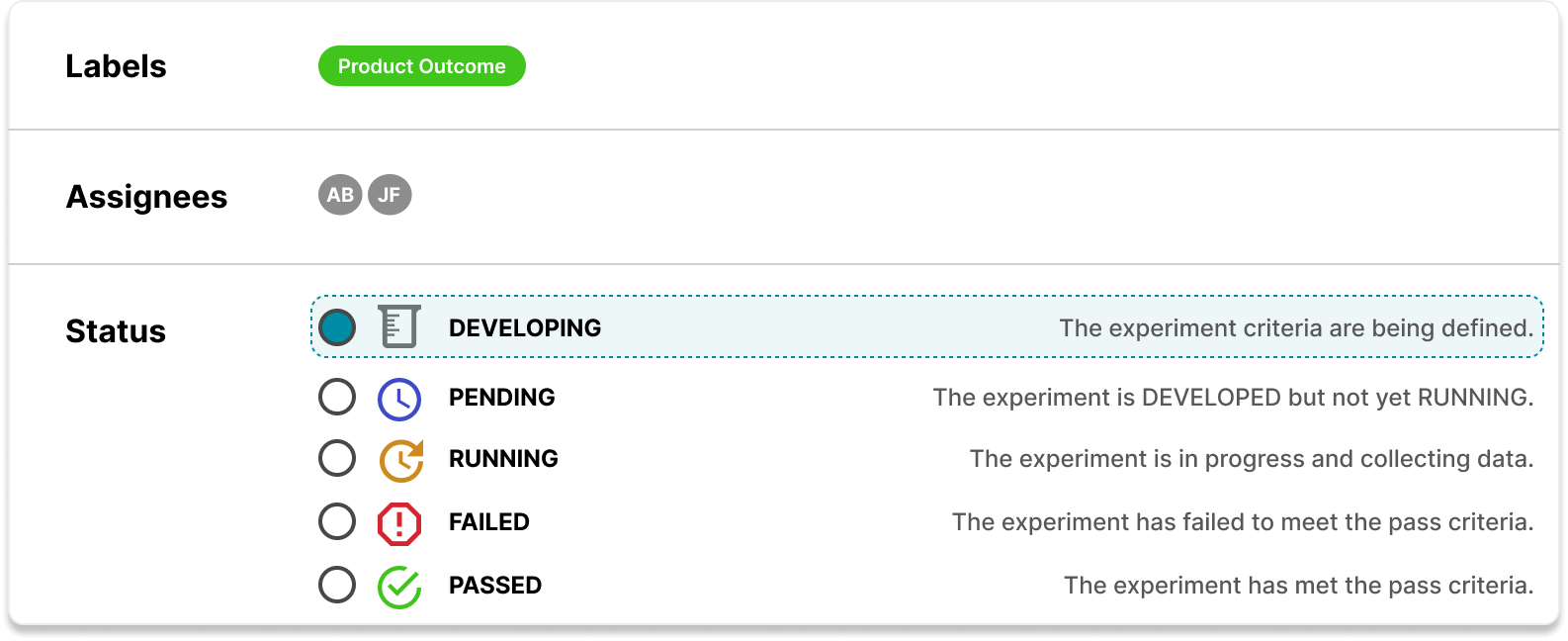
The experiment card type received a new PENDING status to communicate when an experiment is designed but not yet deployed.
Metric and solution statuses
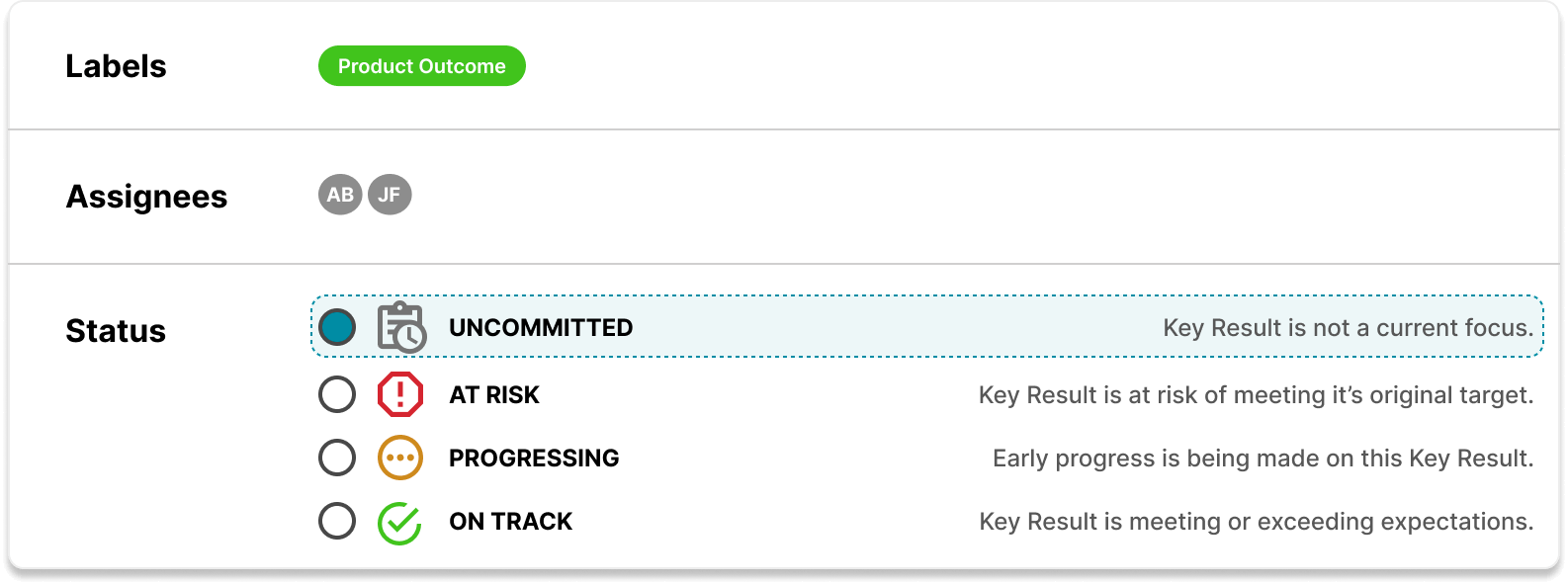
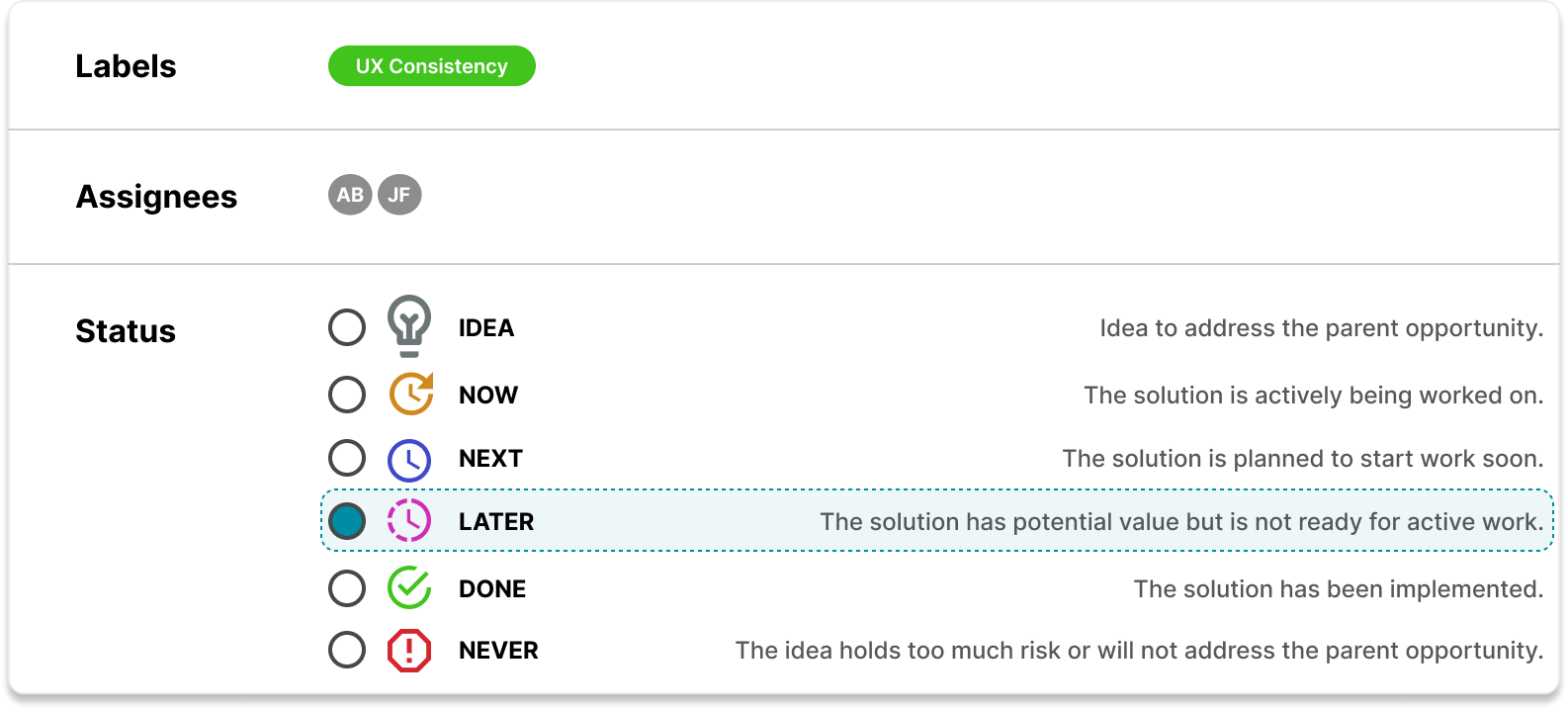
Both these card types remain unimpacted regarding previous statuses.
What's next?
We understand these are not fully exhaustive, and the changes may not capture some existing use cases. However, we encourage you to reach out and share your use cases with us so we can continue to test and evolve the system. You may also find that labels can be an excellent solution for classifying and segmenting data.
We're currently testing and working with teams on ways to use the new and improved statuses to surface inconsistencies automatically and prevent potential issues.
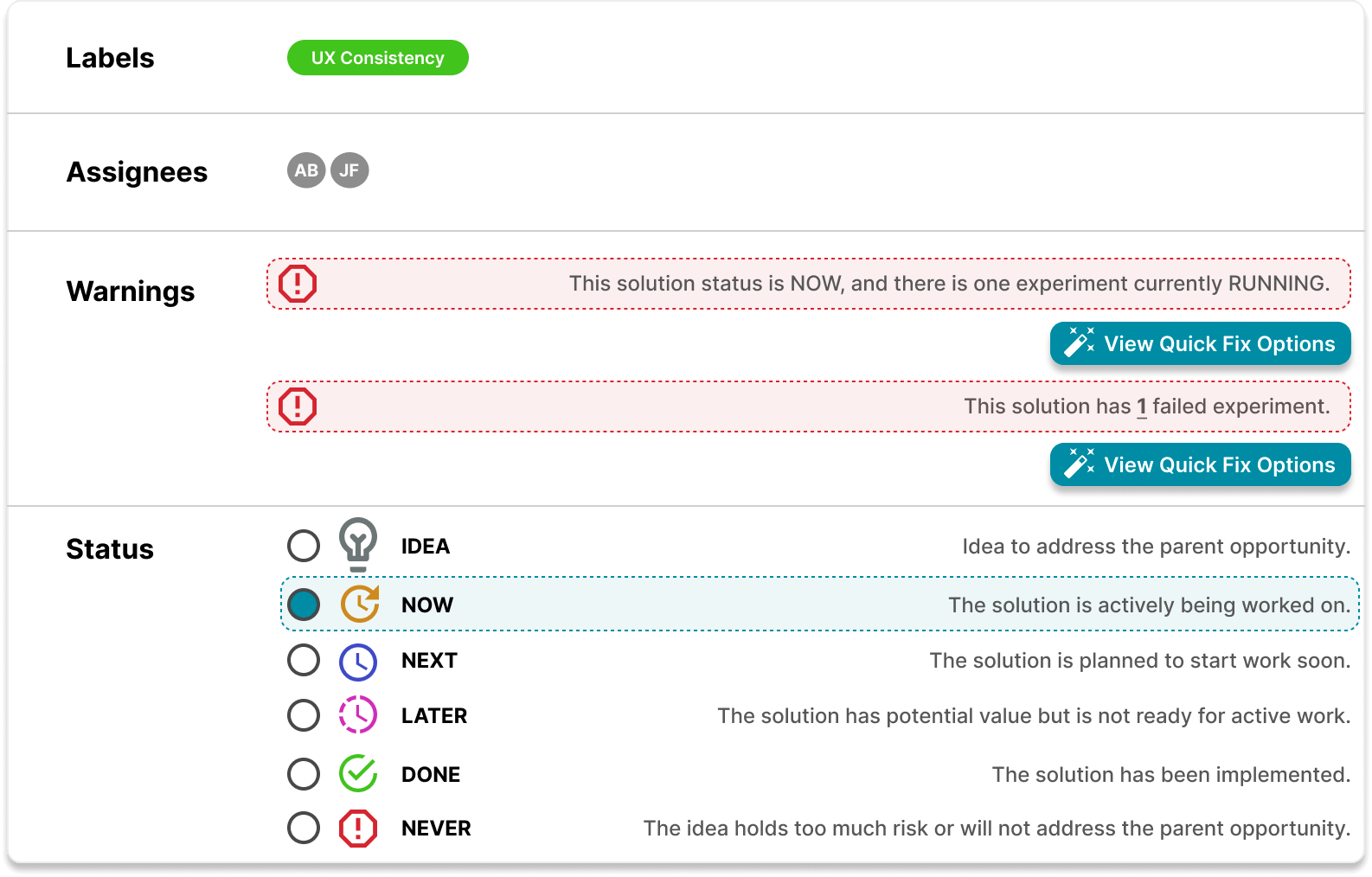
Stay tuned and reach out to get involved!